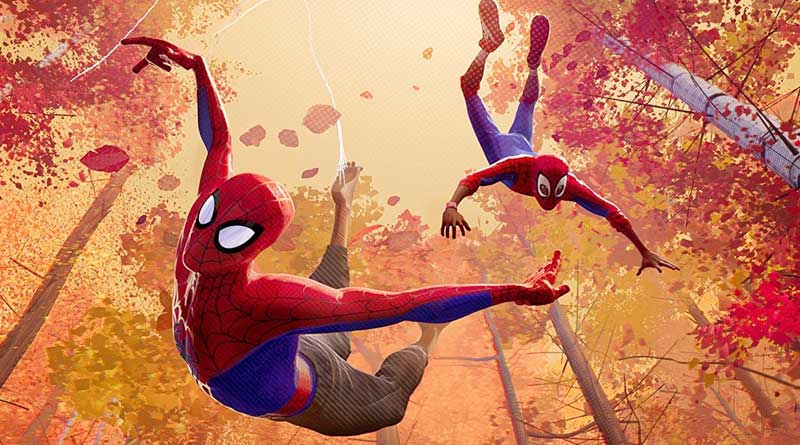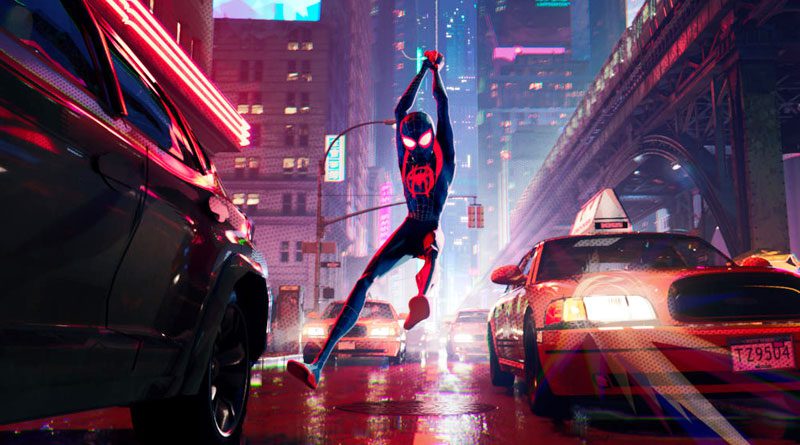Spider-Man: Into the Spider-Verse (2018) Review
You gotta hand it over to Sony for being stubborn persistent when comes to re-igniting their franchise. That franchise in question is Spider-Man. Excluding their joint effort with Marvel that starred Tom Holland, they have previously tried and failed to reboot the last time around in the first two Amazing Spider-Man movies with Andrew Garfield playing the title role. As if we can’t get enough of the friendly neighbourhood web-slinger, here comes another Spider-Man movie. But one that doesn’t connect to any prior big-screen iterations regardless of Tobey Maguire’s, Andrew Garfield’s or Tom Holland’s Spider-Man whatsoever.
Confused, yet? Here, Spider-Man: Into the Spider-Verse is a whole different universe altogether and also marks the first time ever we get to see the web-slinger in an animated form on a big screen. The good news is, the movie doesn’t force us to sit through with the same old Peter Parker’s A-to-Z origin story all over again (even though, Parker does play a significant part in this animated feature). Instead, it focuses more on Miles Morales (Shameik Moore), a half African-American and half Latino teenager whose character was first introduced in the comic book back in 2011. Like Parker, he is bitten by a radioactive spider and becomes the new Spider-Man.
Interestingly enough, this animated feature isn’t just content to Miles Morales’ origin story alone. Co-directors Bob Persichetti, Peter Ramsey and Rodney Rothman alongside co-writer Phil Lord are bold enough to cram as many as five more origin stories! That includes the re-introduction of Jake Johnson’s Peter Parker/Spider-Man (don’t worry, though as the filmmakers are smart enough to re-tell his origin story in a condensed and unique way), Hailee Steinfeld’s Gwen Stacy/Spider-Gwen, Kimiko Glenn’s Peni Parker and her SP//dr suit, John Mulaney’s Spider-Ham and Nicolas Cage’s Spider-Man Noir. If that’s not crowded enough, they even include a gallery of supervillains led by Liev Schreiber’s Kingpin.

Cramming too many characters in a superhero movie tends to risk itself in a make-or-break situation. It even runs a standard two-hour length, which is by right, shouldn’t be enough to tell this much of a story. And yet, as overcrowded as it may seem, Spider-Man: Into the Spider-Verse surprises me a lot by managing to accomplish this otherwise excessive cinema into a hugely entertaining superhero movie. Some of you might be wondering: how is that even possible?
First, it doesn’t take itself seriously. The story is as self-referential as it gets that successfully subverted our expectations on how we usually see in a superhero movie (like how Miles initially reacted when he got bitten by a radioactive spider). And thanks to Phil Lord’s creative input, who is no stranger to poking fun on popular IP as he did alongside Chris Miller in the two 21 Jump Street movies, he certainly has a field time spoofing Spider-Man in a witty, gleeful fashion. Even the so-called multiple origin stories showcased in this movie is efficiently told in an economical manner without all the expected heavy-handedness.

The movie also pays a considerable amount of attention to all of the characters involved here. Each of them has their own significant moments, be it Shameik Moore’s star-making turn voicing the title role or Nicolas Cage’s perfectly gravel-voiced performance as Spider-Man Noir.
Then, there’s the animation. It’s a one-of-the-kind that combines a unique blend of cel-shading, circular pop-art dots as well as 2D and 3D visual textures. Think of it like the pages of a comic book comes to vivid life. The animation is so vibrant and eye-catching that not watching this in the cinema would be a total waste of opportunity. The fluidity of the characters’ movement, the dazzlingly-choreographed action sequences as well as the eclectic blend of hip-hop soundtrack is all incorporated well in this movie. Not to mention the way each Spider-Man character is specifically rendered based on their respective origins and appearances. For instance, the Spider-Ham character is depicted in a traditional 2D hand-drawn art while Peni Parker and her mecha suit appears in a Japanese anime-style.
The only major gripe here is the climactic third-act, which feels somewhat like an overkill. Kind of like trying too hard if you ask me. But despite its minor shortcoming, Spider-Man: Into the Spider-Verse proves that Sony still has what it takes to make their own Spider-Man movie. Remember not to leave the cinemas just yet when the end credits start rolling. Stick around until the end for an amusing post-credit sequence.





